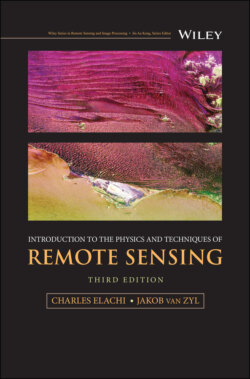Читать книгу Introduction to the Physics and Techniques of Remote Sensing - Jakob J. van Zyl - Страница 30
2.2.3 Luminous Quantities
ОглавлениеLuminous quantities are related to the characteristic of the human eye to perceive radiative quantities. The relative effectiveness of the eye in converting radiant flux of different wavelengths to visual response is called the spectral luminous efficiency V(λ). This is a dimensionless quantity that has a maximum of unity at about 0.55 μm and covers the spectral region from 0.4 to 0.7 μm (see Fig. 2.11). V(λ) is used as a weighting function in relating radiant quantities to luminous quantities. For instance, luminous flux Φν is related to the radiant spectral flux Φe(λ) by
(2.35)
where the factor 680 is to convert from radiant flux units (watts) to luminous flux units (lumen).
Luminous quantities are also used in relation to sensors other than the human eye. These quantities are usually referenced to a standard source with a specific blackbody temperature. For instance, standard tungsten lamps operating at temperatures between 3200 K and 2850 K are used to test photoemissive tubes.
